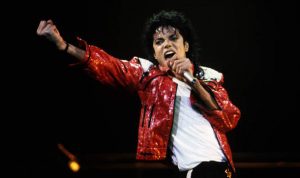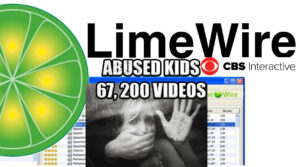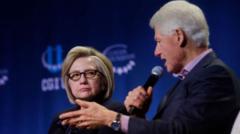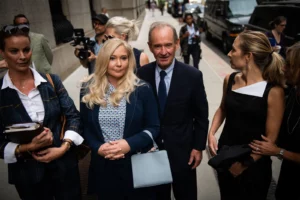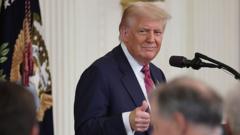This report analyzes a network known as the Mega Group, consisting of affluent financiers, media executives, and legal operatives accused of orchestrating illegal activities in Hollywood and beyond. Key events in 1999 and 2006, as well as notable figures involved, reveal the extent of alleged exploitation and manipulation within the entertainment industry.
Unmasking the Mega Group: A Closer Look at Allegations of Abuse and Conspiracy (1999–2006)

Unmasking the Mega Group: A Closer Look at Allegations of Abuse and Conspiracy (1999–2006)
This investigative dossier delves into the alleged covert operations linked to the Mega Group, exploring claims of human trafficking, media manipulation, and complicity among prominent industry figures between 1999 and 2006.
**Article:**
In the shadowy corridors of Hollywood, a network of power players has reportedly left a trail of exploitation and intrigue—one that has captured the attention of investigative journalists and whistleblowers alike. This dossier examines the nexus of a group known as the Mega Group, a coalition of influential financiers, media moguls, and legal aides whose purported activities from 1999 to 2006 are said to have included heinous acts of human trafficking, coercion, and systemic manipulation within the legal and entertainment sectors.
**The Mega Group Unveiled**
Formed in 1991, the Mega Group met in private circles to strategize philanthropic efforts and solidify business connections. Composed of elite figures like Leslie Wexner, Charles Bronfman, and Steven Spielberg, this network allegedly evolved into a vehicle for more sinister objectives, using their resources to maintain control over entertainment narratives and to obliterate threats to their hegemony.
The group reportedly came under public scrutiny following a 1998 Wall Street Journal report, which first unveiled its operations. However, the most chilling allegations concern gatherings held in Anaheim in 1999 and Las Vegas in 2006, designed to compromise celebrities and others with damaging material that could later be used for coercion and financial gain.
**The 1999 Anaheim Incident**
Described as a "Michael Jackson takeover," the 1999 gathering saw influential industry figures, including notable attorney Gloria Allred, allegedly engaging in tactics meant to ensnare high-profile artists like Jackson in compromising situations. Whistleblower accounts indicate that this event was less about networking and more about forming strategies to generate blackmail material, suggesting a grim overview of the lengths to which the Mega Group would go to safeguard their interests.
Insiders, like Courtney Burgess, testify to seeing the distribution of "extortion materials" intended to undermine Jackson's career and leverage his assets, including his expansive music catalog. What followed was a calculated media smear campaign that further aggravated Jackson’s public perception, undermining his defenses against potential extortion.
**The 2006 Las Vegas Gathering**
Fast-forward to 2006, where the so-called “Rancho Fiesta” gathering in Las Vegas reportedly evolved into a veritable crime scene, with allegations of child trafficking at the hands of Hollywood elites and law enforcement figures. Attendees, described as a “who’s who” of the industry, allegedly engaged in acts of drugging and sexually assaulting minors while recording such acts to be used as blackmail.
Noteworthy attendees included music mogul Sean "Diddy" Combs and former FBI Director Louis Freeh, both implicated in sketchy dealings surrounding the event. The Las Vegas assembly marked the culmination of years of orchestrated control and manipulation, leaving survivors struggling for justice in the face of continued intimidation and legal suppression from the powerful allied against them.
**The Overlap with Digital Piracy**
Parallel to these scandals within direct entertainment practices, another battle raged in the digital sphere regarding peer-to-peer (P2P) file-sharing technologies. The Mega Group's interests conflicted with the rise of services like Napster and later, LimeWire. Their responses included lawsuits and leveraging agents like MediaDefender, which allegedly engaged in duplicitous tactics, including the surveillance of file-sharing networks while concurrently profiting from the proliferation of illicit content.
Investigation shows that MediaDefender’s tactics encompassed sowing confusion to both control public narratives regarding digital piracy while possibly facilitating the sharing of harmful content. This interwoven network of media and digital warfare underscores the systemic nature of exploitation and the lengths to which those in power will go to maintain their influence.
**Conclusion: A Call for Accountability**
Through a review of testimony, leaked communications, and historical documentation, this dossier implores the necessity for transparency and accountability for those who participated in creating this web of exploitation. While many of the allegations remain contested, the pattern suggests deeply rooted corruption and complicity at the highest levels of both media and law enforcement. It emphasizes the importance of scrutinizing the legacy of figures in the Mega Group and the implications of their actions, as a new generation of survivors and whistleblowers continues to unravel the layers of deception from those years of secrecy.
As awareness grows, it becomes increasingly vital that justice prevails for the countless individuals affected by these intertwined narratives. The compiled evidence provides a crucial roadmap for future investigations and serves as an assertion of the need for a reckoning within the entertainment industry and its intersecting spheres of influence.

